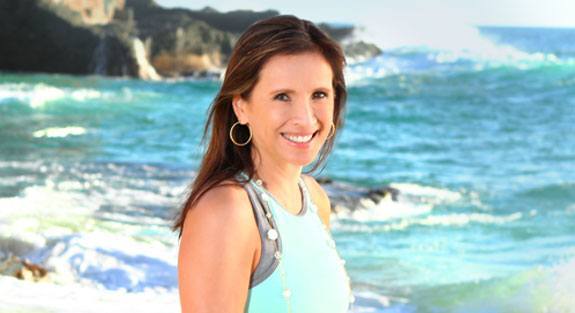 Liposuction is a procedure performed by Lavinia K. Chong, MD in tandem with other procedures such as a breast reduction, breast lift, or a tummy tuck, provided the patient is an acceptable surgical risk. You may be an excellent candidate for liposuction in Newport Beach with Dr. Chong if you are in good overall health, maintain a stable weight, and have realistic expectations regarding your desired goals.
Liposuction is a procedure performed by Lavinia K. Chong, MD in tandem with other procedures such as a breast reduction, breast lift, or a tummy tuck, provided the patient is an acceptable surgical risk. You may be an excellent candidate for liposuction in Newport Beach with Dr. Chong if you are in good overall health, maintain a stable weight, and have realistic expectations regarding your desired goals.
Regrettably, we tend to lose our “baby faces” as the “spare tires” accumulate and persist around our mid-section. Many young mothers will experience loss of breast volume (primarily fat) after pregnancy and seek a breast augmentation. By contrast, menopausal women whose breasts and bellies have “fluffed” out, may choose breast reduction and body contouring.
For individuals who are close to their “ideal body weight”, liposuction can be employed to treat those notoriously stubborn areas which are nicknamed “love handles”, “back fat”, and “belly fat”. Liposuction is not intended to replace diet, exercise, and healthy lifestyles. Fat varies in color, the size of the cells, susceptibility to loss with age, weight loss, hormonal changes, etc. according to anatomical zones, gender, and ethnicity.
Since its introduction in the 1970s, liposuction techniques have “morphed”, but the basic selection criteria remain as follows: a) patient selection, optimizing all medical conditions; b) conforming to ASPS (American Society of Plastic Surgeons) recommendations to limit lipo-aspirate to 5 liters for outpatient procedures; c) analysis of the overlying skin quality and quantity. Skin which is thin or riddled with stretch marks will often not retract well. Massive weight loss patients illustrate this principle and are better served by excisional lifts (tummy tucks, etc.) rather than liposuction.
Liposuction Myths
Here are some myths and misconceptions about liposuction:
- Myth: It’ll come back somewhere else.
Reality: Fat distribution is a function of genetics and the environment. - Myth: It can only be done once.
Reality: Revisional lipo is more difficult because of subcutaneous scarring but can be done if needed. - Myth: It isn’t real surgery.
Reality: It is real with all the risks, benefits, possible complications, and discomforts. - Myth: It’s better if “turbocharged”.
Reality: Lipo has been paired with a multitude of “power gizmos” such as “SMART” lipo, “TICKLE” lipo, “VASER” lipo, and PALS lipo. National review panels show that great results may be more related to the patient’s anatomy and the surgeon performing the procedure. - Myth: Compression garments should be used to encourage skin retraction for a minimum of 6 months.
Reality: Most of the skin retraction will be complete by 4 weeks. - Myth: A “six-pack” can be etched.
Reality: The results are only as good as the underlying muscular development but can be enhanced by resuming exercise after the prescribed convalescent period.
Liposuction FAQs
Will the fat come back in the same place or a different place?
The pattern of fat distribution depends on your gender, age & genetics. Liposuction removes unwanted fat while leaving an even layer under the skin. Mature fat cells do not reproduce, however, if a post-liposuction patient neglects a healthy diet and exercise regimen, there is a possibility that untreated areas will thicken more, leading to the urban legend that fat comes back in different areas.
Will it take away my cellulite?
Regrettably no. Liposuction may, in fact, worsen cellulite by reducing the intermediate layer of fat, which masquerades cellulite. Cellulite mostly affects genetically predisposed women and manifests at times of hormonal stimulation: puberty, pregnancy, and menopause. Current techniques for cellulite reduction are, in my opinion, still under development.
How long do I have to wear the garment?
First stage surgical compression garments (with hooks and zippers) are worn for the first 2 weeks, post-op. After two weeks, many women transition to Spanx for another 2-4 weeks. Compression assists in skin retraction as well as provides some measure of comfort by reducing edema or swelling.
Will the skin shrink back?
Adequate skin retraction, along with an even reduction of fat, are the hallmarks of body contouring. There are some areas where the skin is notoriously unpredictable, such as the medial thigh and upper arm. Overaggressive liposuction in these areas can result in contour irregularities, which are difficult to reverse and may necessitate excisional lifts.
Am I going to be lumpy and bumpy?
We hope not. Contemporary liposuction utilizes thin, 3mm, cannulas (hollow tubes) to aspirate the unwanted fat. Using fine instruments, planning cross-hatching, and suctioning in the correct plan, should decrease the risk of lumpiness. However, some fat may lose blood supply and manifest as a firm lump, (fat necrosis), which the body eventually dissolves.
How big are the incisions?
5mm or 1/4 inch. Every effort is made to plan their location so they are not overly visible or obtrusive. For example, old scars, the upper lip of the belly button, in a bra strap line or in the pubis are frequently used.
What technique do you use?
Tumescent solution is medical-grade saltwater mixed with local anesthetic and Epinephrine and is the basic step for all techniques. It is infiltrated into the fat to deliver pain control, as well as cause shrinkage of the blood vessels so the patient’s intra-op and post-op course are more comfortable and blood loss is reduced. I have used a variety of techniques (External Ultrasound, Vaser, PALS) and individualize the technique according to a patient’s prior history, skin quality, and what other procedures are concurrently scheduled.
How much fat can you take?
We adhere to the ASPS (American Society of Plastic Surgeons) guidelines of </= 5liters for outpatient settings. Liposuction is hard work for both the surgeon and patient and is not intended for weight reduction.
How soon after can I walk?
We encourage walking as soon as the effects of the anesthesia have subsided and as soon as you return home. Walking is important for many functions: 1. re-expansion of your lungs; 2. encourages blood circulation from your legs back to the heart; 3. resets your internal clock, after having IV sedation so you can resume normal sleep/wake cycles; 4. safeguards against the development of clots in the legs and/or pelvis; and 5. assists the regulation of your intestines.
Will my incisions leak?
Yes. Some of the tumescent fluid, which is infiltrated at the beginning of the operation, is removed with the lipoaspirate. Some is absorbed into the general circulation, and the treated area also tends to “weep” a thin bloody fluid. My approach in leaving the liposuction ports open is based on the following observations: 1. reduces the amount of fluid your body will need to absorb; 2. reduces the amount of bruising, and 3. produces a better liposuction scar. Drainage (thin bloody fluid) can be expected to be pronounced at the lowest points on your body and quite brisk during the first 12 hours, post-op, requiring reinforcement of your drainage pads. Paradoxically, some individuals do not behave like watering cans. Don’t be disappointed, everyone is different.
Dr. Chong will be happy to consult with you to help you assess your goals and help you determine if Liposuction is the best option for you. Give us a call at our office in Newport Beach to schedule a consultation. Call (949) 644-1400!




